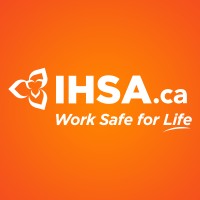This course helps organizations develop a specific team to focus on strengthening MSD prevention efforts within the workplace. The objective of the team is to help better design and plan jobs and work tasks to optimize job performance and minimize the risk of musculoskeletal injuries and work fatigu

This course helps organizations develop a specific team to focus on strengthening MSD prevention efforts within the workplace. The objective of the team is to help better design and plan jobs and work tasks to optimize job performance and minimize the risk of musculoskeletal injuries and work fatigue.
The course is delivered over three days with one day designed to focus on MSD prevention in the office, a day on MSD prevention related to the operations of the organization (trade, warehouse, fleet, etc.), and a third day to establish how the team will function effectively support the organization helping build and strengthen their MSD prevention efforts.
Program Content
Overview of musculoskeletal disorders
How they develop, MSD hazards, how they affect the worker and workplace
Legal responsibilities of workplaces to address MSD
Elements to incorporate in health and safety program for successful MSD prevention
Benefits of an ECT
Applying R.A.C.E to MSD hazards in the office and operations departments (day one and two):
Methods to help recognize and report MSD symptoms and hazards
Evidence-based tools to help assess MSD risk that are appropriate for the tasks performed in the workplace
Use an appropriate MSD risk assessment tool to asses risk for a task performed in the workplace
Apply strategies to develop effective MSD hazard controls
Develop reports summarizing the MSD risk assessments findings
Guidelines to implement MSD controls effectively
How to evaluate the effectiveness on MSD hazard controls implemented.
Start up of ECT Team: Establish goals and objectives of the team, then determine how the team is going to function and next steps.
Who Should Attend?
Anyone recruited for their workplace Ergonomic Change Team.
Prerequisites
There are no prerequisites for this course.
The Infrastructure Health and Safety Association (IHSA) is Ontario’s trusted health and safety resource. Our goal is to improve the lives of Ontario workers. We provide the resources and training that control and eliminate safety hazards in work environments involving high-risk activities.
At IHSA we have always maintained a standard of excellence. We are proud of our role in helping to make Ontario one of the safest places in the world to work.
Our focus is on workers and keeping our promise to provide them with the tools to Work Safe for Life. As part of Ontario's health and safety system, we are recognized by the Ministry of Labour, Immigration, Training and Skills Development, the Ministry of Colleges and Universities, Ministry of Transportation, and the Workplace Safety and Insurance Board as designated trainers and consultants. So, you can be sure that the training you get from IHSA meets regulatory requirements and compliance standards.
© 2025 coursetakers.com All Rights Reserved. Terms and Conditions of use | Privacy Policy